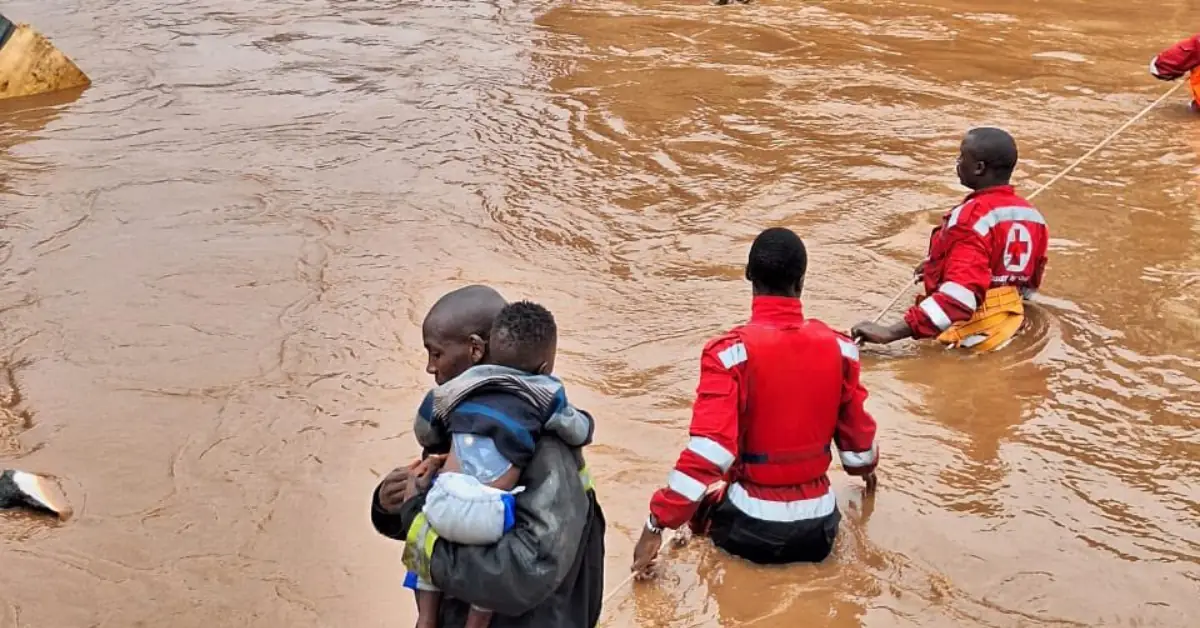
Kenya nairobi flooding – Kenya’s capital city, Nairobi, has a long history of flooding, with devastating consequences. Heavy rainfall, inadequate drainage infrastructure, and rapid urbanization have exacerbated the problem, leading to widespread damage, displacement, and loss of life.
Flooding in Nairobi is a complex issue with far-reaching impacts. Understanding its causes and consequences is crucial for developing effective mitigation and adaptation strategies.
1. Overview of Kenya Nairobi Flooding

Flooding is a significant and recurrent issue in Nairobi, the capital city of Kenya. Historical data reveals frequent and severe flooding events, primarily during the rainy seasons. The city’s topography, characterized by low-lying areas and inadequate drainage systems, exacerbates the flooding problem.
Heavy rainfall, coupled with urbanization and its associated impervious surfaces, further contributes to the severity and frequency of flooding in Nairobi.
2. Causes and Impacts of Flooding
The primary cause of flooding in Nairobi is heavy rainfall, particularly during the rainy seasons. However, inadequate drainage infrastructure, insufficient maintenance, and unplanned urbanization worsen the situation. Urbanization leads to increased impervious surfaces, reducing water absorption and exacerbating runoff. Flooding impacts Nairobi’s infrastructure, disrupting transportation and damaging buildings.
It also affects the city’s economy, leading to business closures and loss of productivity. Moreover, flooding poses significant health risks, such as waterborne diseases and drowning.
3. Mitigation and Adaptation Strategies
To mitigate flooding, Nairobi has implemented various measures, including improving drainage systems, constructing floodwalls, and implementing early warning systems. Community engagement and awareness play a crucial role in flood risk reduction. Innovative approaches, such as green infrastructure and nature-based solutions, are also being explored to enhance resilience to flooding.
4. Data and Analysis
Data on rainfall patterns, flood levels, and flood-related incidents in Nairobi provide valuable insights for flood management. Analysis of this data reveals trends and patterns in flooding, helping identify vulnerable areas and prioritize mitigation efforts. However, challenges exist in data collection and analysis, highlighting the need for robust data systems to support evidence-based decision-making.
5. Policy and Governance, Kenya nairobi flooding
Existing policies and regulations in Nairobi aim to address flood management, including the Nairobi City County Climate Change Action Plan and the National Disaster Risk Management Policy. Evaluating the effectiveness of these policies is crucial to identify areas for improvement.
Collaboration among government agencies, NGOs, and community organizations is essential for effective flood risk reduction.
6. Future Projections and Climate Change
Climate change models project increased rainfall intensity and frequency in Nairobi, leading to higher flood risks. Adaptation strategies, such as improving drainage infrastructure and implementing flood-resilient building codes, are essential to mitigate the impacts of future flooding. Additionally, nature-based solutions and community-based adaptation measures can enhance the city’s resilience to climate change.
Closing Summary

Addressing flooding in Nairobi requires a multifaceted approach involving infrastructure improvements, community engagement, and innovative solutions. Climate change projections indicate that future flood risks are likely to increase, necessitating proactive measures to protect the city and its residents.
Common Queries: Kenya Nairobi Flooding
What are the main causes of flooding in Nairobi?
Heavy rainfall, inadequate drainage infrastructure, and rapid urbanization are the primary causes of flooding in Nairobi.
What are the impacts of flooding on Nairobi?
Flooding in Nairobi can lead to widespread damage to infrastructure, disruption of economic activities, displacement of residents, and health risks.
What are some mitigation measures being implemented in Nairobi?
Nairobi has implemented various mitigation measures, including improved drainage systems, floodwalls, and early warning systems.
How is climate change expected to affect flooding in Nairobi?
Climate change projections indicate that future rainfall patterns are likely to become more extreme, increasing the risk of flooding in Nairobi.





